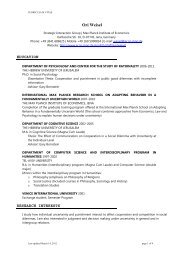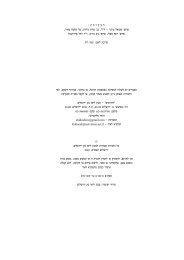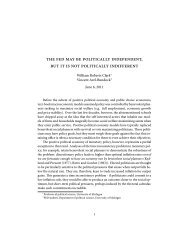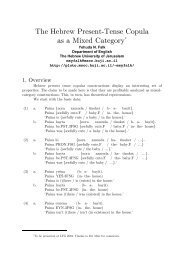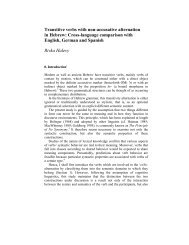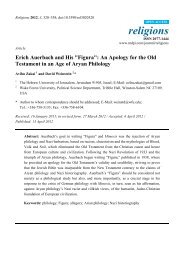View - Pluto Huji Ac Il
View - Pluto Huji Ac Il
View - Pluto Huji Ac Il
Create successful ePaper yourself
Turn your PDF publications into a flip-book with our unique Google optimized e-Paper software.
CDF<br />
0.0 0.2 0.4 0.6 0.8 1.0<br />
0.0 0.2 0.4 0.6 0.8 1.0<br />
Figure 1: Distribution functions under the model θi ≡ θ for all i; n = 20: solid line - the prior U(0,1),<br />
dashed line - the posterior for X ∗ = 1, dotted line - the posterior for X ∗ = 0. The 95% equal-tails credible<br />
intervals are defined by the points where the posterior distributions cross the horizontal y = 0.025 and y =<br />
0.975 lines.<br />
If the company insists on a prior consisting of independent θi’s while the regulator<br />
assumes the same θ in all experiments, then the regulator and the company are in conflict.<br />
In fact, from the discussion in the previous section it is seen that the company and<br />
the regulator will have the same posterior distribution only when Xt is sufficient for θt.<br />
Thus, the Bayesian paradigm appears to solve the conflict only by imposing rather strict<br />
and questionable assumptions. Without such assumptions the conflict that arose under<br />
the frequentist paradigm remains unresolved. A similar phenomenon has been recently<br />
demonstrated by Senn (2008) for a normal model.<br />
It is shown in the Appendix that when θi ≡ θ the posterior distribution of θ given X ∗ is<br />
stochastically decreasing in n when observing either one or zero successes. This implies that<br />
smaller values of θ would be predicted as n increases. It is interesting to note that when the<br />
experiment results in one success, the posterior distribution is stochastically larger than<br />
the prior (see Figure 1), and converges to it; thus observing one success indicates to the<br />
Bayesian that θ is larger than initially believed. This is somewhat similar to the behavior<br />
of the confidence intervals of (3), whose limits decrease with n. The limiting behavior of<br />
the posterior, discussed in details in the Appendix, is somewhat similar to that observed<br />
by Cleary and Casella (1995), who study p-values under a Bayesian publication bias model<br />
with a flat prior.<br />
theta<br />
4 The General Binomial Case<br />
So far, we have examined the publication bias problem for general n, and the case c = 1,<br />
and gave numerical examples for n = 20. The following discussion is aimed at showing<br />
that the selected example of n = 20 and the selection criterion of X ≤ c = 1 is not a case<br />
of selection bias on our part. Indeed, the nature of the results does not depend on c or n.<br />
In this section we consider the regulator-company conflict only in frequentist terms; some<br />
6



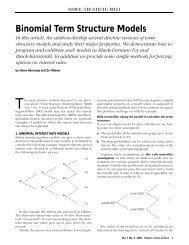
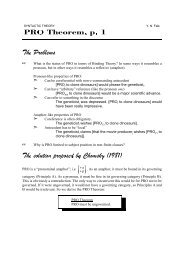
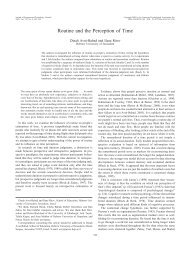
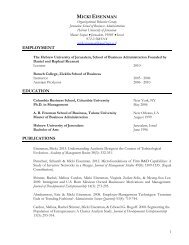
![CV [PDF] - Pluto Huji Ac Il](https://img.yumpu.com/18174585/1/190x245/cv-pdf-pluto-huji-ac-il.jpg?quality=85)
